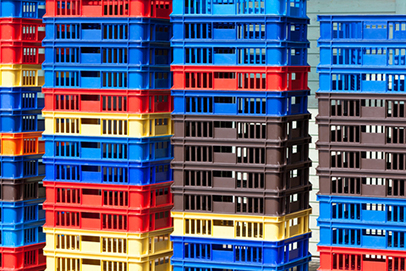Science, History, and Real-World Use Support Safety of Reusable Packaging
OPINION
Reusable containers for the transport packaging of food have been used around the world for generations. Billions of reusable packaging products are used each year in North America alone to safely transport fresh and nutritious foods from farms to consumers, and there has never been an identified or detected risk to food safety as a result of their use.
More growers, retailers, and other users in the food supply chain are adopting reusable transport packaging because it provides superior performance and product protection, lower supply chain systems cost, and reduced environmental impact, among other benefits. This growth in user preference makes companies competing against reusable containers concerned over lost business. In response, a corrugated packaging interest group recently funded and published a report asserting that reusable containers pose a heightened risk to food safety compared to their own single-use products.
 First, it must be emphasized that there has never been a documented food safety issue from the actual reuse of commercial containers. Milk crates, bread trays, and containers of various material types for agricultural commodities, for example, have been safely used over and over again in food production and supply. This longstanding record for food safety should not be ignored.
First, it must be emphasized that there has never been a documented food safety issue from the actual reuse of commercial containers. Milk crates, bread trays, and containers of various material types for agricultural commodities, for example, have been safely used over and over again in food production and supply. This longstanding record for food safety should not be ignored.
Second, the reusable packaging industry follows rigorous cleaning and testing protocols and deploys advanced industrial washing operations that meet or exceed government standards. Earlier this year, our organization further strengthened the industry’s safety practices by issuing common standards for the effective cleaning, testing, and handling of reusable packaging for food applications. The guidelines were developed in collaboration with growers, retailers, and leading industry food safety experts, and they follow Good Manufacturing Practices (GMPs) and Hazard Analysis Critical Control Points (HACCPs), which are the cornerstone of all modern food safety systems.
Third, industry food safety professionals working with farmers and retailers are actively engaged in their packaging choices and performance to ensure that their products for sale meet the highest quality standards. It is important to recognize that the food safety experts who perform extensive inspections and safeguard their food supply chains every day also believe in the safe use of reusable transport packaging.
The recent efforts to cast doubt on the safety of reusable packaging for food are not based on the historic body of evidence or an actual occurrence in commercial use environments. Rather, the information cited is based on laboratory experiments measuring subjective and hypothetical scenarios, and the experimental results are being mischaracterized in public channels for competitive gain. Matters of food safety should neither be manipulated nor competitive, and the creation of false choices in the marketing of products should not be an acceptable practice.
One example of the misleading translation from laboratory to commercial environments is the cleaning method. The report cites the ineffective use of sanitizers to remove harmful bacteria. The report, and presumably the study, does not take into account that commercial cleaning operations involve multifaceted steps and techniques in preparing a container for reuse. Factors such as heat, detergents and water pressure, and the time and sequence in which they occur, play a critical role in cleaning, in addition to the use of proven sanitizers for killing microbes and biofilms. According to a Food Safety Magazine article entitled, “Biofilms: Forming a Defense Strategy for the Food Plant,” “Removal of biofilms is achieved by a combination of four factors: 1) formulations and concentrations of cleaning and sanitizing agents; 2) exposure time; 3) temperature; and 4) mechanical activity.” Therefore, the corrugated lab’s use of only a sanitizer to eradicate existing microbes to acceptable levels is incomplete research when drawing conclusions about the effectiveness of the entire commercial cleaning operation.
Food safety is not a choice. And attempts to increase public anxiety without proper cause is a lose-lose proposition for all in the food industry. The Reusable Packaging Association (RPA) would be glad to work with partners and other interested parties to ensure that the best and most representative science is performed and available to evaluate and verify food safety in all areas involving transport packaging, for both multi-use and single-use containers.
RPA stands by the industry’s proven safety record, the stringent measures for cleaning reusable products, and the extensive data collected every day that validates reusable packaging’s safe use for food applications. To read RPA’s sanitation guidelines, visit our website.
No comments:
Post a Comment